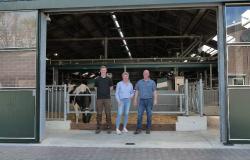Shutterstock
Analysis Meat & Protein
Yesterday 2:00 PM – Matthijs Bremer
The broiler price remains the same this week, but according to market insiders the choice is not controversial. Due to the lower Polish prices, more poultry meat is imported from Poland. Although prices remain the same on paper, traders indicate that actual trading prices are lower.
Read Foodbusiness for free for 14 days
Get acquainted for 14 days for free and without obligation
with our market information
- Access to all Premium market information
- Technical Analysis of Commodities and Currencies
- Insight into current prices and quotations
Do you have a tip, suggestion or comment regarding this article? Let us know
The Barneveld broiler quotation remains stable for the fourth week in a row, at €1.15 per kilo.
Although the broiler listing holds, the decision is controversial. Last week the Polish quotation was already significantly below the Dutch one. In the regions with the most expensive broilers, 5 zlotti (€1.15 at current exchange rates) was charged, but the lowest prices were around 4.78 zlotti (€1.10). As a rule, such a situation leads to significant exports to the Northern European markets and that is no different at the moment. The market reports that imports from Poland have increased significantly. That is no different at the moment. Prices have now converged somewhat with a range of between 4.80 zlotti (€1.11) and 4.92 zlotti (€1.14).
Traders indicate that more and more broiler chickens are entering the Dutch market from Poland. In practice, this puts pressure on prices. Traders indicate that there was already a considerable discussion within the Barneveld listing committee. The penny could fall both ways, namely for an equal quote or a small decrease. Not all traders agree on the chosen rate. Opponents point to the Belgian ABC quotation, as this quotation is usually approximately the same as the Dutch quotation, although this quotation is shown including VAT. At our southern neighbors the price fell by a cent, from €1.19 to €1.18.
Market
The decline is not yet immediately visible in the quotations of slaughterhouses. Esbro’s slaughter price remains the same at €1.06. Clazing export slaughterhouse also uses the same slaughter price at €1.15. However, traders indicate that the price remains the same mainly on paper. In practice, surcharges have now fallen, as allowances are lower and the room for negotiation has largely disappeared.
Moreover, it is not only the supply that ensures lower prices. According to market insiders, demand is also somewhat weaker than before. This mainly concerns domestic demand. It doesn’t help that the weather is bad. Due to the cold and wet weather, there is little barbecue. This clearly has an impact on the predominantly weak meat markets. The demand from international markets for European poultry meat is still higher than normal. Currently, the contract price for broilers in Brazil is 7.22 real (€1.31). This still ensures favorable exports from the Northern European market. Although competition from Eastern Europe is growing.
Ukraine export limited
In addition, the European Union has set a new limit for Ukraine’s poultry meat imports. Brussels effectively sets a new quota of 137,000 tons of poultry meat per year. The European Union originally had a quota of 90,000 tons of poultry meat per year. However, due to the war in Ukraine, the EU decided to suspend all trade restrictions, but the free trade situation is now coming to an end.
Tags: Polish exports start depress poultry meat prices Analysis Meat Protein






